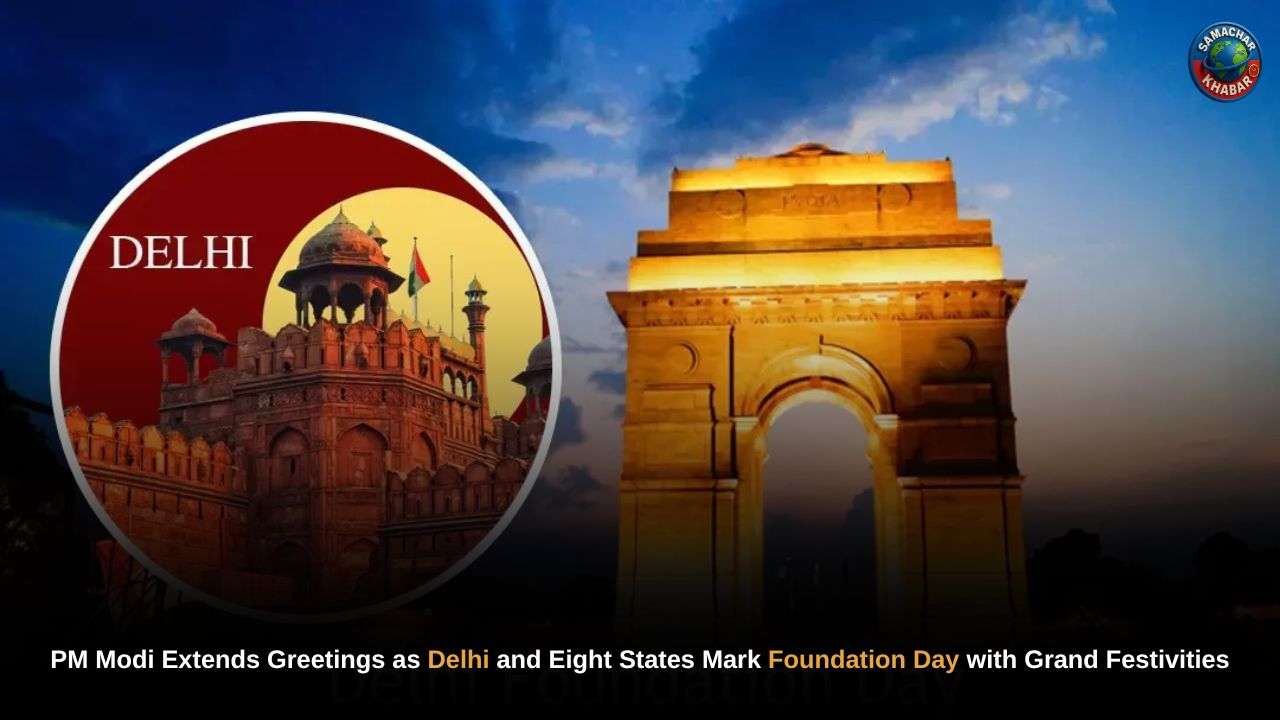As 31 October 2025 approached, the festival of Halloween was set to captivate millions around the globe, not just with costumes and candy, but with a hidden past steeped in mystery. What began more than two millennia ago as the Celtic festival of Samhain has evolved through centuries of Christian influence and modern commercialism.
From bonfires and spirit-warding to pumpkin carving and trick-or-treating, today’s Halloween carries a rich legacy of ritual, belief and celebration.
Key Insights on Halloween 2025: History, Evolution and Cultural Impact
- Halloween 2025 historical roots: Originates from the ancient Celtic festival Samhain, marking the end of the harvest season and the start of winter when the boundary between the living and the dead was believed to be thin.
- Christian adaptation and naming: In the 7th–8th centuries CE, Christian observances such as All Saints’ Day (1 November) incorporated aspects of Samhain; October 31 became “All Hallows’ Eve”, later “Halloween”.
- Tradition-to-modern-celebration pathway: Costumes, masks and disguises originally aimed to confuse spirits; trick-or-treating evolved from “souling” or guising; pumpkin and turnip carving began in Ireland and Britain as lanterns to ward off evil.
- Commercial and cultural scope in 2025: Halloween is now a global phenomenon with vast spending on costumes, decorations, pets and treats, an evolution far removed from its solemn origins.
- Fascinating fun-facts: Among many surprising details: about one-quarter of Americans call Halloween their favourite holiday; a pumpkin is botanically a fruit; the next full moon on Halloween won’t occur until 2039; and many parents admit sneaking their children’s candy.
- Why Halloween still matters: Beyond fun and spectacle, it reflects our enduring relationship with mystery, death and the cycle of seasons. In 2025, Halloween continues to perform a cultural role, linking ancient fears, communal ritual and modern celebration.
Ancient Celtic Origins: Samhain and the Thin Veil Between Worlds
More than two thousand years ago, Celtic peoples in what is now Ireland, Scotland and the United Kingdom celebrated Samhain , literally “summer’s end”. It marked the end of the harvest and the onset of the darker half of the year, a period historically associated with death and the unknown. During this time, the Celts believed that the barrier between the world of the living and the world of the dead became especially thin, allowing spirits to return.
Bonfires were lit, livestock slaughtered, crops shared , all to honour ancestors and protect the community. Disguising oneself in costumes and masks was a way to avoid being recognised by wandering spirits.
The Christian Influence and the Birth of “Halloween”
As the Christian Church spread across Europe, many pagan festivals were assimilated into the Christian liturgical calendar. One key example: the designation of All Saints’ Day on November 1, to honour Christian martyrs and saints. The evening before became “All Hallows’ Eve”, which evolved into the modern term “Halloween”.
Also Read: The Countdown to Fall Back: Everything to Know as Daylight Saving Time Ends November 2nd
This allowed older customs : feasts, bonfires, spirit-warding rituals to survive under a new religious framework. Over time, Halloween’s identity shifted from a solemn vigil to a night of masquerade and merriment.
Traditions That Shaped Today’s Halloween
- Costumes and disguises: Rooted in the Celtic belief of tricking spirits, the idea of wearing masks or dressing up carried into modern Halloween.
- Trick-or-treating & guising: Medieval European practices of “souling” (where the poor went door‐to‐door for food in exchange for prayers) transformed into today’s candy-collecting tradition.
- Pumpkin (and earlier turnip) carving: In Ireland and Britain, people carved faces into turnips or vegetables to ward off evil spirits; the pumpkin became popular after the tradition travelled to North America.
- Modern symbols & colours: The orange (harvest) and black (darkness/winter) colour scheme, haunted houses, ghost imagery , all evolved from these deep roots.
Halloween 2025: A Global Cultural Phenomenon
Today, Halloween is more than a single evening , it has become a season of celebration, retail, social gatherings and creative expression. Candy manufacturers, costume retailers, pet costume lines and home-decoration markets all thrive. While exact figures for 2025 vary, the trend of commercial growth continues.
This global spread owes much to immigration (Irish and Scottish traditions brought to North America in the 19th century) and global media.
Fun facts worth noting for 2025:
- Nearly 23 % of Americans surveyed said Halloween is their favourite holiday , with women (26 %) more inclined than men (19 %).
- A pumpkin is scientifically a fruit, because it develops from a flower and contains seeds.
- The world record for the heaviest pumpkin exceeded 2,700 lbs in recent years.
- The next full moon on Halloween won’t occur until 2039 , so empty skies in 2025.
- Parents admit sneaking children’s Halloween candy; many households observe old superstitions like placing salt at the door to ward off spirits.
Why Halloween’s Evolution Matters in Modern Times
Beyond the costumes and candy, Halloween reflects something deeply human: our engagement with change, seasons, mortality and community. The transition from harvest to winter, life to death, and the living to the unseen has always triggered ritual and meaning. In 2025, when you light a jack-o’-lantern or join a gathering in costume, you are participating in a story that stretches back millennia.
Final Reflection: Timeless Ritual and Modern Revelry
What started as a quiet, mysterious festival in the Celtic world has transformed into a vibrant cultural phenomenon in 2025. With its roots in the rituals of Samhain and its journey through Christian adaptation and modern commercialism, Halloween remains both timeless and evolving. Whether you celebrate for fun, for tradition or for community, the magic of October 31 lies in its ability to connect past and present , reminding us that the unseen may yet be present, and that celebration, in many forms, is humanity’s response to mystery.
The Spiritual Insight: The Truth About Ghosts and the Divine Knowledge of Saint Rampal Ji Maharaj Ji
When we talk about ghosts or unseen entities, many modern, educated people often dismiss their existence, claiming that science cannot prove such things. Yet, those who have personally experienced these mysterious occurrences , such as disturbances in homes, sudden fear, or negative energy know that these forces are real.
According to Tatvdarshi Saint Rampal Ji Maharaj, such spirits are actually beings who have not attained a human body. They remain in subtle form, wandering in search of a physical body to fulfill their desires. These souls often try to enter human bodies so they can act through them.
However, when a person takes the refuge of a Tatvdarshi Saint and follows Shastra-anusaar Bhakti (devotion according to Holy Scriptures), all such negative entities : ghosts, spirits, and evil energies , leave that person’s surroundings. In a home where true devotion exists, the Supreme God Himself resides, and where God dwells, no ghost or evil power can ever harm anyone.
For deep spiritual knowledge and protection from such unseen forces, listen to the Satsang of Saint Rampal Ji Maharaj Ji and read the sacred book “Gyan Ganga.”
Visit: www.jagatgururampalji.org
Watch on YouTube: Sant Rampal Ji Maharaj
FAQs on Halloween 2025: History and Evolution of the Spooky Festival
1. What is the origin of Halloween?
Halloween originated from the ancient Celtic festival of Samhain, marking the end of harvest and the start of winter.
2. How did Christianity influence Halloween?
The early Christian Church merged pagan customs with All Saints’ Day, creating All Hallows’ Eve , later known as Halloween.
3. Why do people wear costumes on Halloween?
Costumes originated from Celtic traditions, where people disguised themselves to ward off wandering spirits during Samhain.
4. What is the origin of trick-or-treating?
Trick-or-treating evolved from medieval “souling,” when poor people asked for food or treats in exchange for prayers.
5. Why are pumpkins carved on Halloween?
Pumpkin carving began in Ireland, where people carved faces into vegetables like turnips to keep evil spirits away.
















